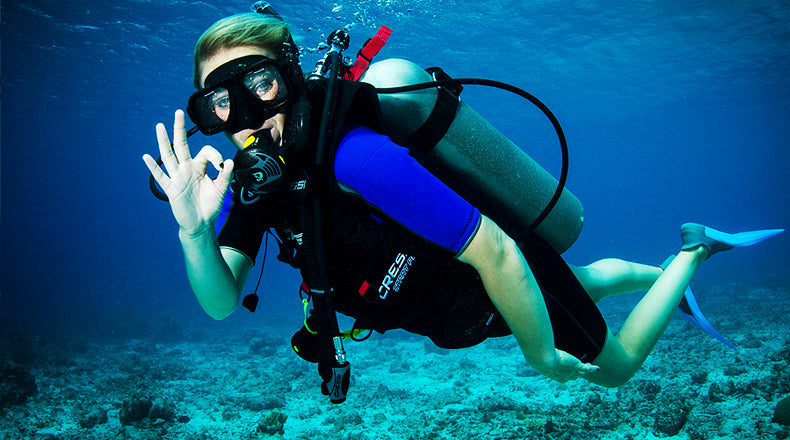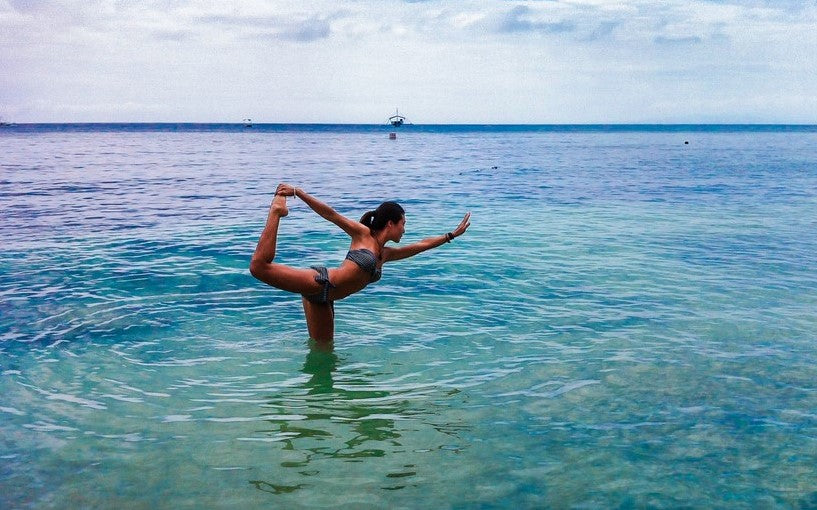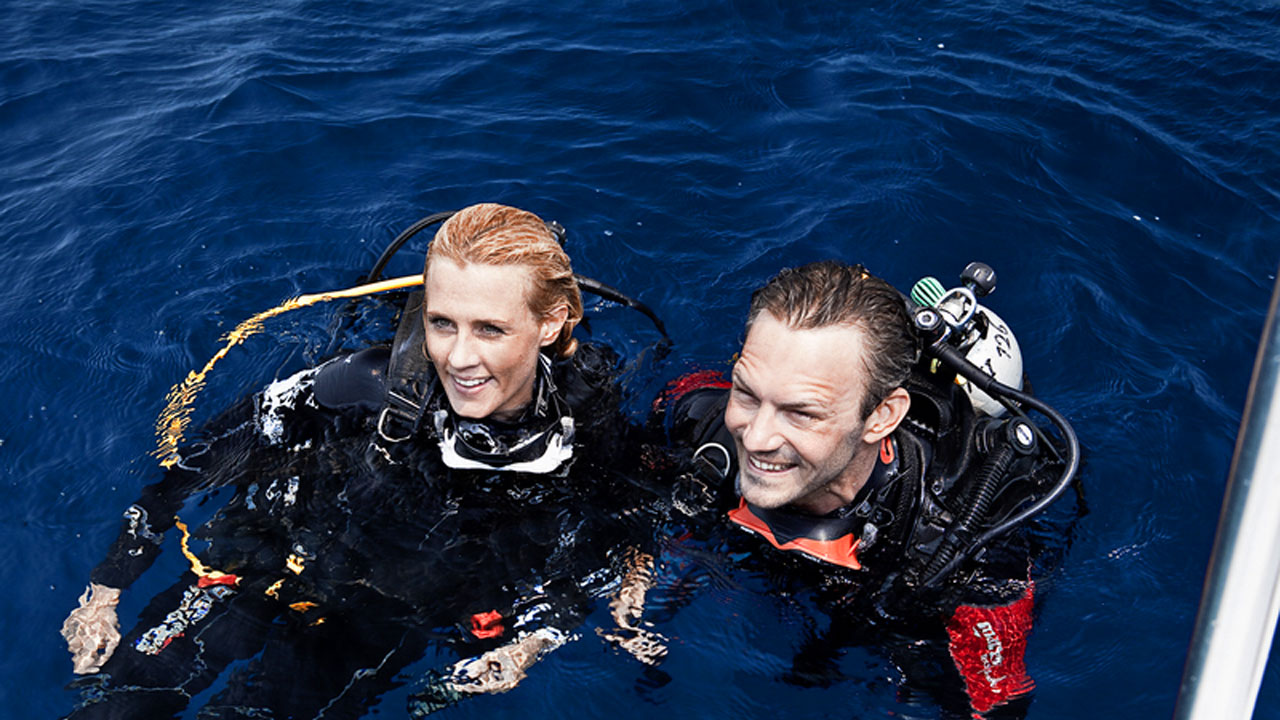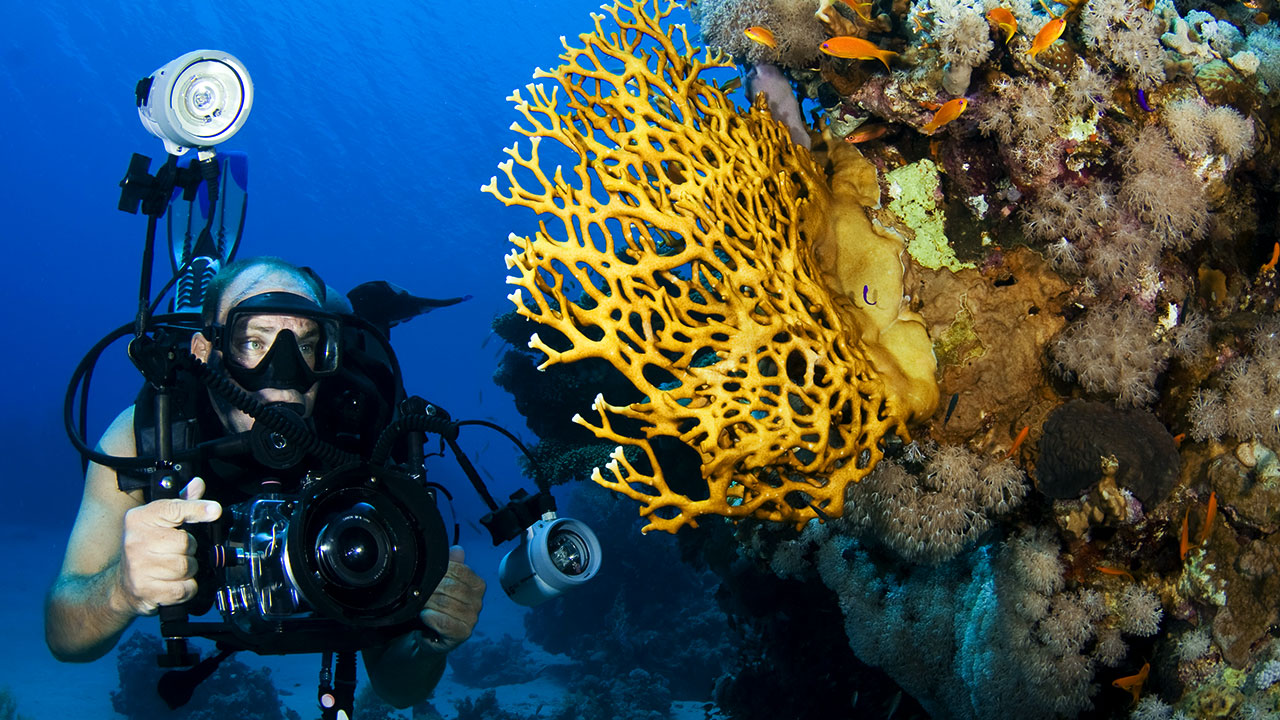Simple Tricks to Improve Your Air Consumption

Some time ago we have talked about different factors that influence your air consumption rate, as well as a few ways to calculate it. Hopefully, you have already had a chance to measure your SCR/DCR and can now move from theory to practice by using this knowledge in real-life diving situations. That being said, you should keep calculating your SCR periodically to measure your progress as you gain experience and become more comfortable in the water. What’s more, if you want to accelerate the process and improve your air consumption faster, you can try a few proven techniques that we are going to examine below.
1. Reduce Drag
One of the simplest things you can do to quickly improve your air consumption is to reduce drag, i.e. decrease the resistance you encounter as you move across the water. The streamlined diver will expend less effort and thus use less air.
Securing all accessory gear close to your body will help you make your underwater profile more sleek and smooth. Begin by tucking in your gauges and octopus. There are various clips, loops, cords, and fasteners to use for the task. You can also place your slate, knife, reels and a surface marker buoy inside your BC pockets.
2. Improve Your Swimming Technique
Once your equipment is streamlined, focus on your body and it’s movements. Perfect your finning technique and learn not to use your hands in any way when swimming underwater. You can either fold them across your chest or place at your sides. The rule of thumb is to kick with a slow, wide motion, but you should experiment to find the amplitude most comfortable and effective for you. Try to keep your head, torso, legs, and fins on the same horizontal plane. Let your movements be sleek and graceful.
3. Practice Buoyancy Control
Not being able to control your buoyancy during a dive does not only take away from the enjoyment of the process but also makes you waste air by constantly adding and letting it out from your BC. Instead of fidgeting with your buoyancy compensator, try to use variations in lung volume to keep your depth constant. You can ascend or descend a few feet solely by breathing in or out. While you should never hold your breath, learn to control it. Breath a little deeper if you need to rise a few feet, a lungful of air can add as much as 10 pounds of buoyancy. Breath shallower, when you need to return to original depth.
4. Minimize the Lead
Another important factor that influences your buoyancy and breathing is the amount of weight you use. You should have a horizontally oriented position in the water column when properly weighted. An overweighted diver tens to plow diagonally through the water and needs to work harder to propel him/herself forward. What’s more, an overweighted diver must add extra air to the BC. All of this negatively influences air consumption, so when you learn to weight yourself properly, the air consumption will also improve.
5. Learn Proper Breathing Technique
Proper breathing technique is also extremely important for improving your air consumption. The key is to breathe slowly, deeply, and steadily, almost as if you were asleep. Slowing your breathing down may feel a bit weird at first and will take to master, but if you keep practicing, the results will follow. To begin with, you can use a 4/6 ration - inhale for 4 seconds and exhale for 6. Why should the exhalation be longer than the inhalation? When you exhale completely, and then take a deep breath in, rather than taking shallow breaths, as it sipping from your tank, you flush out the “dead air” (which has a high concentration of carbon dioxide) better and deliver more oxygen to the lungs. This promotes quicker gas exchange and delays the urge to take another breath, since it is the high carbon-dioxide concentration that triggers the urge to take another breath, even before you need more oxygen. As a result, a tank lasts longer when you take deeper breaths because you need fewer of them.
6. Stay Warm
You do remember that you lose heat from your body around 20 times faster in water than in air, right? And the colder you are, the more air you will use, as your body will work harder to maintain core temperature. Therefore, wearing adequate exposure protection is another way to avoid sucking down your air supply too quickly. Don’t forget to cover your head with the hood, if necessary. Stay warm and your air will last longer.
7. Learn to Relax
Anxiety and panic also lead to poor air consumption. Many novice divers tend to stress over the little things. Anxiety increases your breathing rate and can even cloud your judgment. Conversely, the more comfortable you are underwater, the less air you use. Try different relaxation and visualization techniques to learn to calm down and control your emotions and breathing. This will not only help you improve air consumption, but also increase the chances of reacting appropriately in case some problems arise.
8. Keep Fit
As we have already mentioned, your air consumption increase when demands are placed on your body. However, the definition of demand depends on the physical shape of each particular diver. Physically fit divers react to demand better than those who are not.
Diving Fitness: The Meaning, Components and Importance
You can read more about diving fitness in this article.
9. Upgrade Your Gear
Use only good-quality scuba gear and don’t forget about regular service and maintenance.
Your regulator is especially important when it comes to air consumption. It needs to be easy to breathe from without undue resistance, especially if you plan to dive deeper. So, it is recommended that you get the best option you can afford, after all, it’s your life support equipment. Regardless of its price range, you should overhaul your reg on schedule and always make sure it’s functioning at full capacity. An increased breathing resistance, and reduced airflow, caused by a poorly maintained regulator will not only have a negative impact on your air consumption, but may also be a safety hazard.
A choice of a BCD can also play a role in air consumption. A BC that's too large or has excess lift will create a surprising amount of drag. An oversized model will also tend to shift, throwing off proper trim. So, look for the combination of fit and just the right amount of buoyancy.
Even your fins can have a slight influence on how much air you use. Some fins are more efficient at translating muscle power into movement. A good pair means you'll kick with less effort, and less often, which, in turn, will reduce air consumption.
Experiment with these consumption-lowering techniques, monitor your progress, make the necessary adjustments and soon enough you will see the desired improvement!





